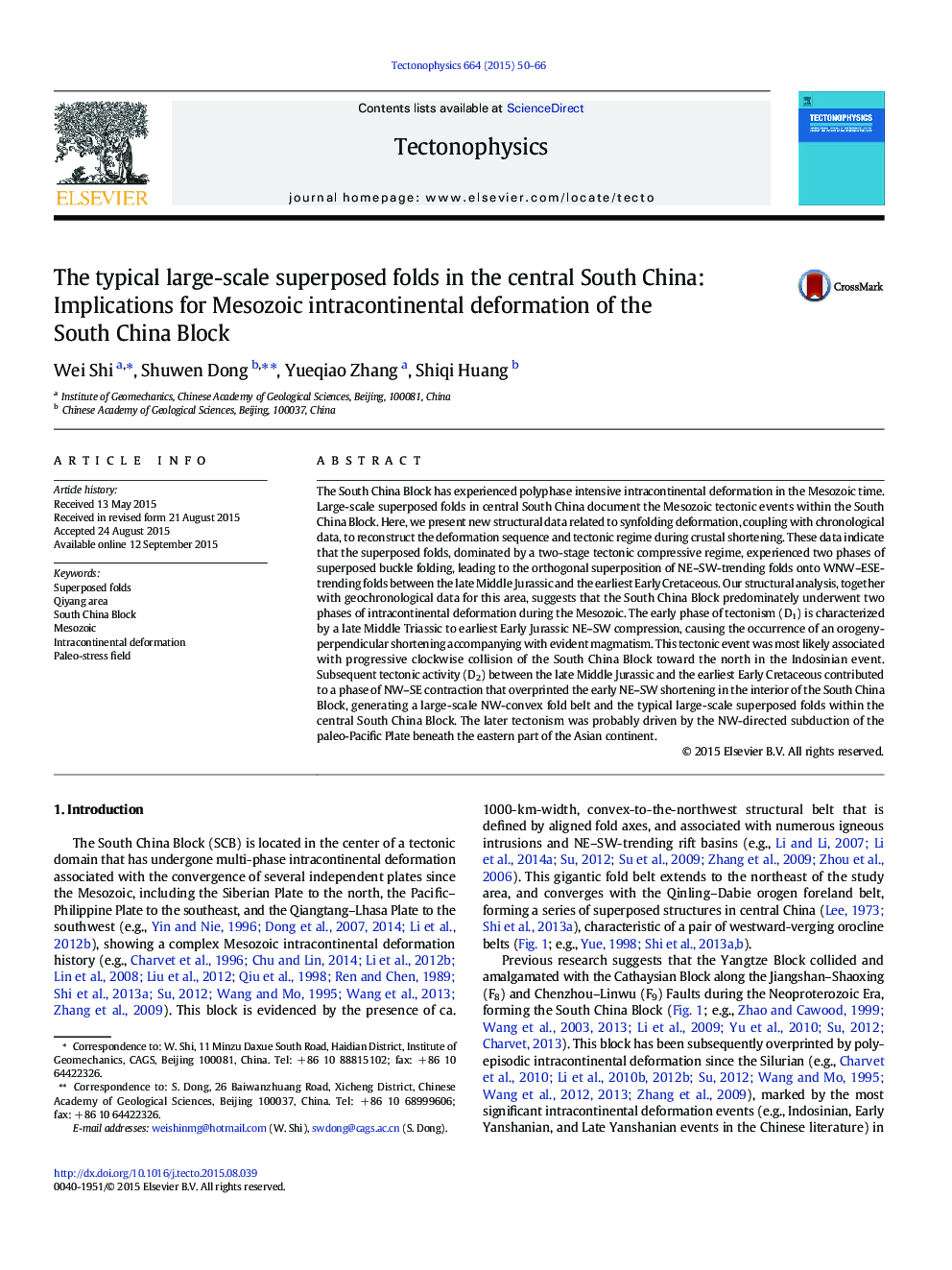| کد مقاله | کد نشریه | سال انتشار | مقاله انگلیسی | نسخه تمام متن |
|---|---|---|---|---|
| 6433581 | 1636731 | 2015 | 17 صفحه PDF | دانلود رایگان |

- This work shows a case study on the Mesozoic typical superposed folds in the SCB.
- The superposed folds were dominated successively by a two-stage tectonic regime.
- They were due to the superposition of NE-trending folds onto WNW-trending folds.
- The SCB underwent a two-phase intracontinental deformation in Mesozoic.
The South China Block has experienced polyphase intensive intracontinental deformation in the Mesozoic time. Large-scale superposed folds in central South China document the Mesozoic tectonic events within the South China Block. Here, we present new structural data related to synfolding deformation, coupling with chronological data, to reconstruct the deformation sequence and tectonic regime during crustal shortening. These data indicate that the superposed folds, dominated by a two-stage tectonic compressive regime, experienced two phases of superposed buckle folding, leading to the orthogonal superposition of NE-SW-trending folds onto WNW-ESE-trending folds between the late Middle Jurassic and the earliest Early Cretaceous. Our structural analysis, together with geochronological data for this area, suggests that the South China Block predominately underwent two phases of intracontinental deformation during the Mesozoic. The early phase of tectonism (D1) is characterized by a late Middle Triassic to earliest Early Jurassic NE-SW compression, causing the occurrence of an orogeny-perpendicular shortening accompanying with evident magmatism. This tectonic event was most likely associated with progressive clockwise collision of the South China Block toward the north in the Indosinian event. Subsequent tectonic activity (D2) between the late Middle Jurassic and the earliest Early Cretaceous contributed to a phase of NW-SE contraction that overprinted the early NE-SW shortening in the interior of the South China Block, generating a large-scale NW-convex fold belt and the typical large-scale superposed folds within the central South China Block. The later tectonism was probably driven by the NW-directed subduction of the paleo-Pacific Plate beneath the eastern part of the Asian continent.
Journal: Tectonophysics - Volume 664, 28 November 2015, Pages 50-66